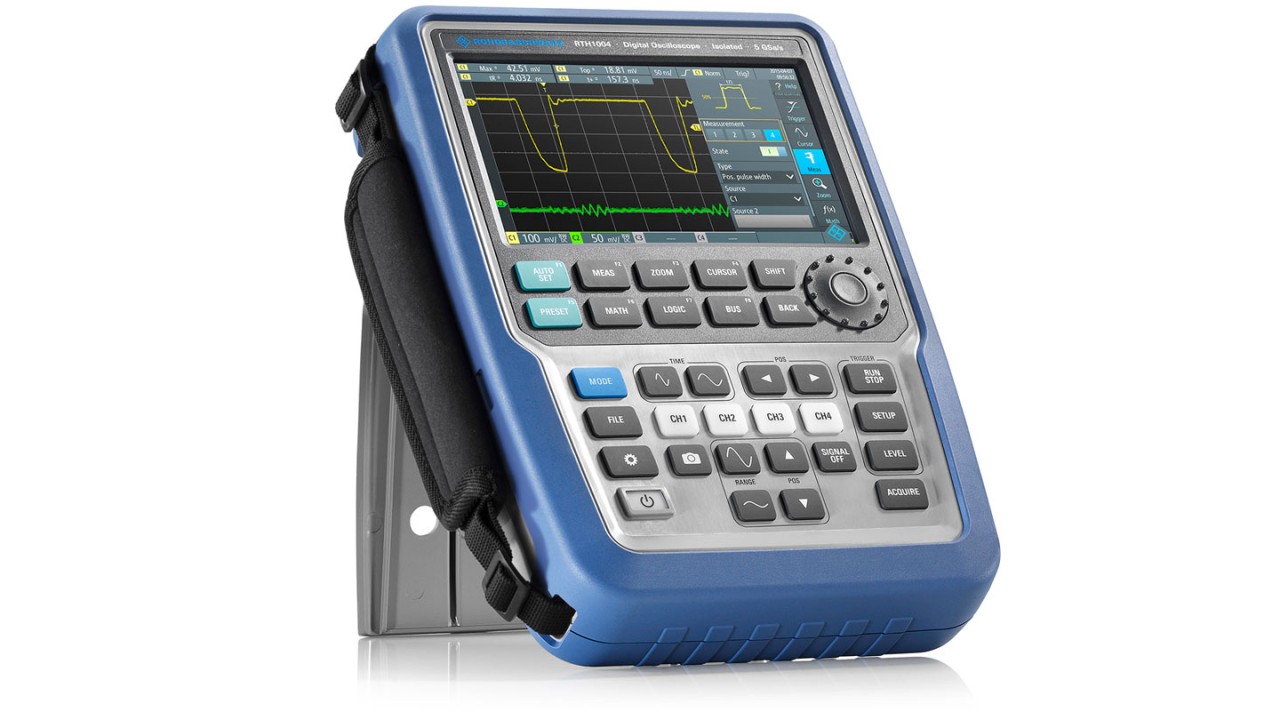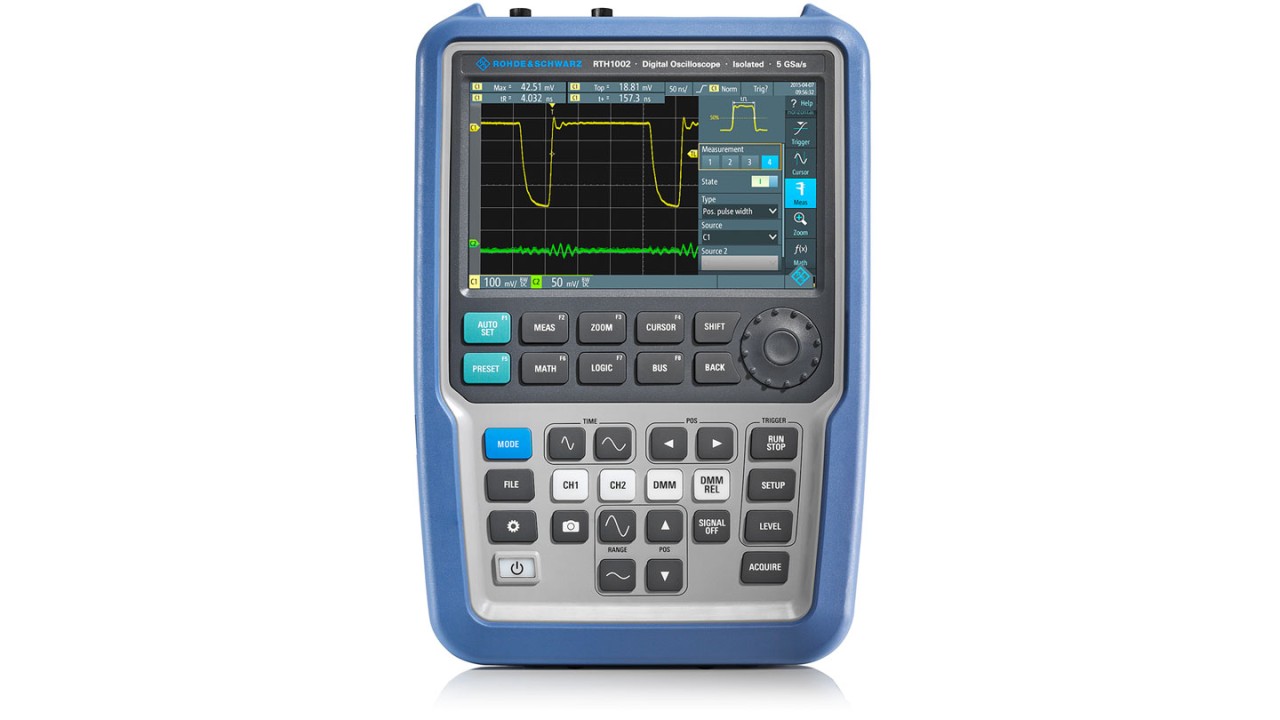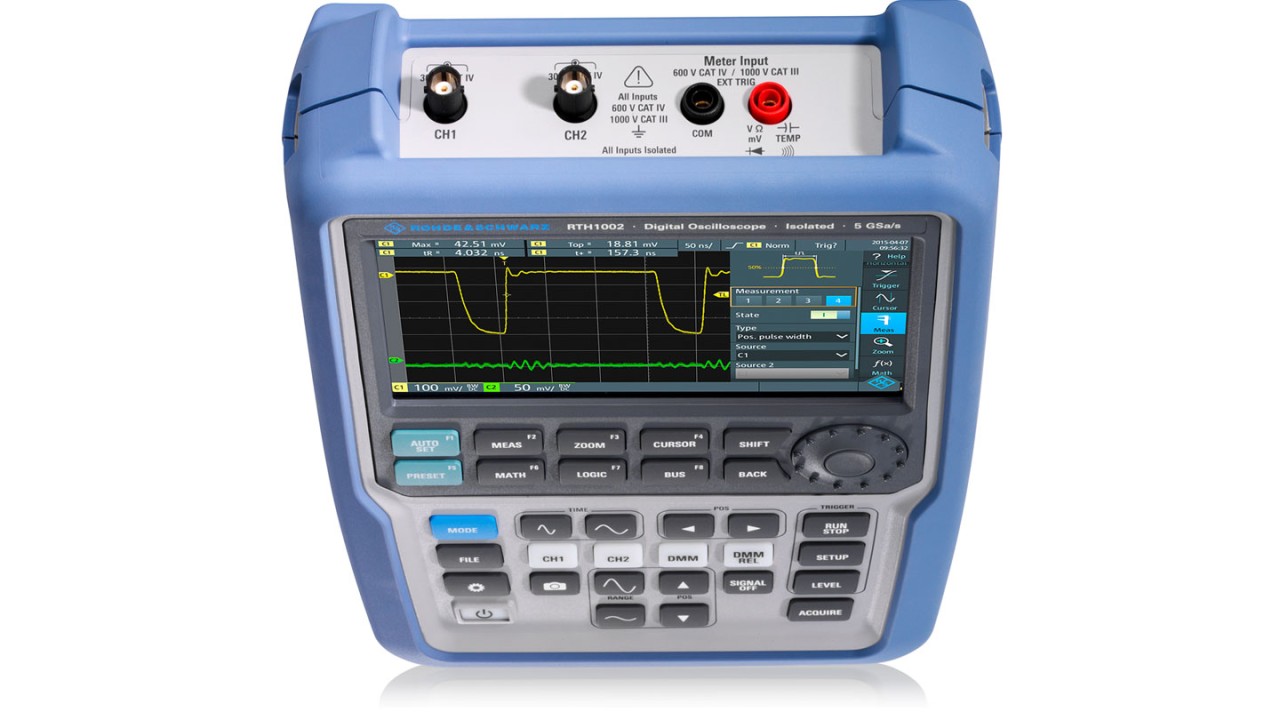Testing strengths of the R&S®Scope Rider RTH
The triggering and decoding options of the R&S®Scope Rider RTH support not only the conventional CAN and LIN bus protocols, but also protocol analysis functions for SENT – a serial point-to-point protocol defined specifically for sensor communications in the automotive sector. Thus, users can acquire specific events, data or error states of fast and slow SENT protocol channels. It also supports the short and enhanced message formats and the various available CRC check methods.
With the R&S®RTH-K9 CAD-FD serial triggering and decoding option based on the R&S®RTH-K3 CAN/LIN serial triggering and decoding option, the user can also analyse CAN-FD signals. At transmission rates of up to 15 Mbit/s, the CAN-FD serial bus is significantly faster than standard CAN (up to 1 Mbit/s) and is gaining importance.
The fully digital trigger and decoding unit operates at a sampling rate of 1.25 Gsample/s, irrespective of the analog or digital channel sampling rates used for signal acquisition. This makes it possible to easily decode serial protocols even when very slow time domain signals are displayed at the same time.
At the press of a button, the R&S®Scope Rider RTH displays the currently analysed protocol in table format together with additional protocol-specific information. Another benefit is the support for symbolic labels. Decoded control signals are displayed in plain text, making it very easy to work with the instrument.












